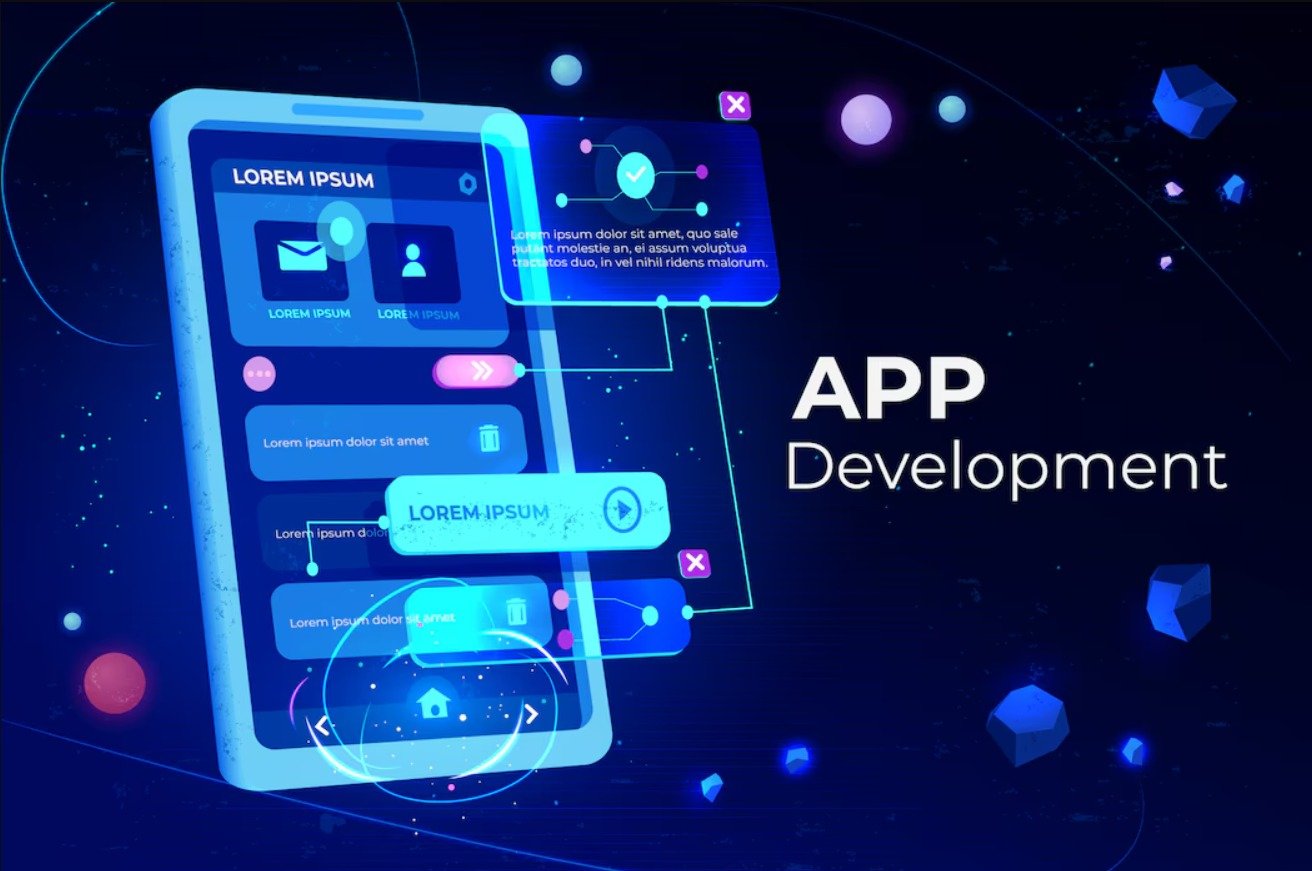
As Android development tools USA continues to grow, its role in the tech industry becomes more crucial than ever. With most smartphones running on the Android operating system, both businesses and developers are prioritizing the creation of engaging, feature-packed apps.
Globally, Android app development leads the mobile app market, with 87% of developers creating apps for Android, according to a recent survey by Statista. In comparison, only 58% focus on Apple’s iOS, showcasing the increasing preference for Android worldwide.
This growing user base has spurred the creation of advanced tools that make building apps easier, enhance performance, and deliver a better user experience. This article aims to guide developers and software engineers through the top Android development tools USA, offering insights into how these tools can boost productivity and app quality.
MECE Framework Overview
In order to achieve that, a simple and easily understandable categorization will be applied, which is the MECE Framework (Mutually Exclusive, Collectively Exhaustive). It will assist in categorizing Android development tools USA based on their categories while also making sure all the phases in the development and every activity are captured.
M: Mutually Exclusive
As a form of classification the tools will be arranged neatly in categories, this will ensure that no two tools fall into one category as much as possible. These are IDEs, libraries/frameworks, testing tools, build tools, and version control systems.
C: Collectively Exhaustive
A brief on most of the Android development tools USA used in each of the phases of Android development, ranging from coding and testing to deployment and monitoring will be discussed to offer a comprehensive list of tools for the USA-based Android developers.
Core Categories of Android Development Tools (Mutually Exclusive)
Let’s have a closer look at the core categories of Android development tools USA:
Integrated Development Environments (IDEs)
1. Android Studio: The official IDE from Google, optimized for Android development.
2. Visual Studio with Xamarin: A cross-platform development tool for building Android and iOS apps.
3. IntelliJ IDEA: A popular IDE that supports Android development with advanced coding assistance.
Libraries and Frameworks
1. Kotlin: The official Android programming language, known for its concise syntax and interoperability with Java.
2. Jetpack Compose: A modern toolset for developing UIs native to the Android platform with less entry code.
3. Dagger 2: An excellent framework for dependency injection to improve the code handling capability.
Testing Tools
1. Espresso: A strong reference model for inspecting and testing graphical user interfaces of Android applications.
2. JUnit: An Android tester that enables unit testing of applications in such a way that tests can be run more than once.
3. Firebase Test Lab: A testing tool that enables testers to carry out tests on cloud and real devices.
Build Tools
1. Gradle: The name given to the most basic tool of build automation when building applications for Android.
2. Maven: An application for tracking dependencies and building projects.
3. Bazel: A build and test tool that is specialized on massive code bases.
Version Control and Collaboration
1. GitHub: A commonly known system for maintaining versions of codes and integrating between them.
2. GitLab: Provides end-to-end CI/CD for higher throughput delivery pipelines.
3. Bitbucket: A second form of change management, commonly used together with other Atlassian products, such as Jira.
Detailed Breakdown of Top Android Development Tools (Collectively Exhaustive)
Now the best part, here is the entire list of best Android development tools USA with each & every tool explained:
1. Android Studio
Android Studio is an IDE for Android developed by Google and is loaded with a bunch of features that make development easier.
- Features: It has a rich code editor that makes programmer work easier plus the support of Gradle Rocket which is a build tool plus the facility of the emulator to test the application.
- Benefits: Android Studio helps developers increase productivity by providing productivity-enhancing Android development tools USA such as code refactoring, code linting, and code debugging.
2. Kotlin
Android Kotlin is the language that was instantly adopted due to its novel features.
- Features: Kotlin is the language that offers better readability, is safe and is tested well with Java to enhance cleaner code representation.
- Benefits: When using Kotlin, chances of runtime crashes are prevented and the code is easy to maintain making the performance better.
3. Genymotion
Allows for testing Android applications: Genymotion is a cloud-based emulator that has fast emulation for its users.
- Features: MDS offers the ability to run across multiple devices along with a live debugging mode.
- Benefits: Genymotion also makes it faster to test different devices, so that the app performs more uniformly across the different devices.
4. Retrofit
Retrofit simplifies network operations by providing a powerful HTTP client for Android apps.
- Features: With support for REST APIs and easy JSON parsing, Retrofit streamlines the process of connecting Android apps to remote services.
- Benefits: Retrofit allows developers to handle complex API calls with minimal code, improving app performance and reducing bugs.
5. Gradle
Gradle is the most widely used build automation tool for Android, offering extensive flexibility and power.
- Features: Advanced dependency management and build caching accelerate the build process.
- Benefits: Gradle allows faster development cycles, especially when working on large codebases.
6. Firebase
Firebase offers a comprehensive suite of backend services for Android apps.
- Features: It encompasses real-time databases, performance monitoring, and, reporting tools in case of a crash.
- Benefits: Firebase’s cloud-based services offer seamless scalability, making it ideal for apps of any size. It allows developers to store and sync data in real-time with Firebase Realtime Database or the more powerful Cloud Firestore.
7. Fastlane
Fastlane simplifies the CI/CD process involving build, testing, and deployment to enable developers to make quick app releases.
- Features: It also works seamlessly with your current development setup, so it can handle repetitive but essential operations such as sign apps and deploying beta versions.
- Benefits: It is clear how the use of Fastlane would bring benefits such as saving time in terms of the release process, minimizing the occurrence of human error, and increasing the efficiency of the team.
8. Espresso
Espresso is widely used too to support the automation of UI testing with applications for Android.
- Features: What is more, it provides quick and stable test running with the Rata seamless connection to Android Studio.
- Benefits: Espresso assists developers in easily tracing user interface issues and application performance issues within the system before deployment.
9. GitHub
GitHub can be used effectively to manage version control and work with Android projects.
- Features: Some of its elements are role-based permission, issue tracking as well as integration with CI/CD tools.
- Benefits: GitHub simplifies coding and development by improving communication among team members besides acting as a tool to manage, review as well as deploy code.
10. Lottie
Lottie is an Android library that lets users put delightful and scalable animations into Android apps without sacrifices.
- Features: It has compatibility with After Effects animation, hence making it easy to integrate complex designs.
- Benefits: With Lottie users get a better experience by adding complex animations as elements of the interface with small consumption of resources.
How These Tools Fit Together in a Workflow?
Now, it is time to know how these Android development tools USA complement each other within a framework:
Development Phase
When it comes to actual writing of the app and coding Android developers usually incorporate IDEs such as Android Studio and languages such as Kotlin. To simplify the process of designing the UI of the app, Libraries like Jetpack Compose are being used whereas for Network operations, Retrofit has been implemented in the app.
Build and Testing Phase
Android development tools USA such as build tools like Gradle for instance are used in managing the dependencies and building the project. Every time Apps that use Espresso and Firebase Test Lab are always efficient devices for various and respective surroundings.
Collaboration Phase
Tools like GitHub are used to code together; revision controls, and manage the different versions of the project source code. This aids in having a standards check and the organization’s progress over development teams.
Deployment and Monitoring Phase
The Deployment and Monitoring phase involves the use of software and components of the system to conduct a trial run for real problems. Some devices exist to facilitate the deployment and such involve a fast lane that enables app deployment. What follows after deployment is related to services to use such as Firebase monitoring the work in real-time once the application is deployed in production.
How to Select the Best Android Development Tools for Your Project?
Choosing the right Android development tools USA depends on several factors:
Project Complexity
There could also be some discrepancies between simpler applications and some projects that have a lot of features: this is the case when the developer has to use Android Studio, Firebase, and Retrofit while working on a comparatively simple application.
Team Size
While small teams can use GitHub as a tool, larger enterprises use GitLab or Bitbucket with CI/CD built into them.
Budget
Android Studio is free and open-source and helps small businesses since Gradle and Kotlin have standard licenses and fees, therefore, large teams can subscribe to advanced services such as those by Firebase.
App Requirements
For apps that have heavy backend features, Firebase and Retrofit are perhaps among the best that one can have whereas Genymotion turns out to be very useful when testing the application on multiple devices.
Some Recommendations:
- Small Businesses: Android Studio Kotlin Github Firebase is inexpensive for small numbers of staff and workers.
- Enterprise-Level Teams: While working in big teams such as in-house or outsourcing, strong integrated tools like Firebase, Fastlane, and CI/CD automation pipelines can be useful.
Future Trends in Android Development Tools
The future of Android development tools USA and all over the world is evolving with the adoption of innovative tools:
- Kotlin Multiplatform: When getting more popular it offers the ability to develop the app for both Android and iOS systems using the same code.
- AI-Driven Tools: It provides developers with several tools such as image identification, language analysis, and much more all of which are embedded in machine learning.
- Cloud-Based Development: Services such as Firebase and Genymotion help address issues related to cloud-based testing and successful application management excluding native infrastructure and speeding up the development.
Case Study: Successful Use of Android Development Tools in the USA
One US-based startup was able to build a fitness app using Android Studio, Firebase, and Kotlin. By using Android Studio’s intelligent code editor and Gradle build system, they reduced coding time by 30%. Firebase extended the ability of real-time database for apps, and crash analysis, thus enhancing app scalability. Kotlin helped the team to write less error-free code regarding the development phase.
Results:
- Increased App Performance: There were a few crashes during the use of the app.
- Reduced Development Time: High-speed coding and testing cycle.
- Enhanced User Engagement: The enormous value of hardware and software systems that enabled real-time analytics resulting in optimization for engagement.
Conclusion
To gain good efficiency and performance it is important to select the right Android development tools USA. From the list below, the following tools are cross-platform, and all cycle phases are at Android Studio, Kotlin, Gradle, and Firebase. Regarding this, no matter whether it is a start-up company or an enterprise-level team, the primary criterion is to choose an appropriate tool based on the project’s complexity, personnel, and cost. Check all these tools today to find out how you can improve your Android application development process.
FAQs:
Q. What is the best IDE for Android development in the USA?
A. Android Studio IDE is recommended for Android development activity because it has resourceful features that enable easy coding and testing.
Q. How does Kotlin benefit Android app developers?
A. It also covers null safety and is completely interoperable with Java thus providing a safer code and increased efficiency in development.
Q. Which tools are most effective for testing Android apps?
A. Espresso, Firebase Test Lab, and JUnit are some of the critical testing tools, which aid in testing and locating issues and improving the UI and overall usability of the app.






